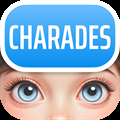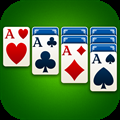Everything Revealed In Magic: The Gathering's Duskmourn: House Of Horror Debut

Quick Links
- Story
- Mechanics
- Art Treatments
- Commander
- Nightmare Bundles
Magic: The Gathering has done horror before. One of its most popular settings is the gothic plane of Innistrad, while Phyrexia has offered plenty of body horror over the years. But its latest set, Duskmourn: House Of Horror, goes a bit more modern.
Inspired by horror media from the ‘80s to the present, Duskmourn gives Wizards of the Coast the chance to lean more heavily into brutal imagery and references to the recent greats of horror. At PAX Prime, Wizards opened the door to Duskmourn and kicked off its preview season with a look at the art treatments and mechanics we’ll encounter when it launches on September 27.
Story
Mountain by Nestor Ossandon LealDuskmourn is a new plane for Magic. IT was once a regular world, much like Earth in the 1980s, but where all magic and technology was fuelled by demonic pacts. Once such deal trapped the demon Valgavoth in a mansion, the house that was to become Duskmourn.
Confined to the house, Valgavoth found a loophole in his prison. Instead of leaving the house, he merely expanded its walls until it consumed the entire world. Now, the plane of Duskmourn is one, huge house, with rooms ranging from regular bedrooms and dining halls, to forests, fields, and cliffs, all full of the worst horrors Valgavoth could conjure up.
The story follows a team of heroes breaking in to Duskmourn to rescue Nashi, Tamiyo’s son who has been left traumatised by Tamiyo’s death during the March of the Machine. As Tyvar, The Wanderer, Kaito, Zimon, Niko, and new ally Winter hunt the halls for Nashi, they encounter monsters, mutated survivors, traps, and even Valgavoth himself.
Mechanics
Niko by Aurore FolnyCompared to some sets, Duskmourn: House Of Horror is a surprisingly complex set, with lots of new, returning, and tweaked mechanics vying for your attention.
New Mechanic: Rooms
Though split cards fell to the wayside somewhat with the rising popularity of double-faced cards, Duskmourn is bringing them back for a whole new use – the rooms of Duskmourn.
Rooms are enchantment cards that allow you to choose and cast one half of it. That enchantment entering the battlefield is called ‘unlocking a door’, while the second half of it remains locked.
By paying the listed mana cost of the other half of the card, you can unlock that room’s door as well, and gain access to both halves of the card’s abilities.
For example, Dollmaker’s Shop costs one generic and one white to cast. Doing this counts as unlocking its door, and once it’s on the battlefield you can then pay four generic, two white to unlock the door to Porcelain Gallery, and gain its effects as well (or vice-versa).
Unlocking a door doesn’t count as the enchantment entering the battlefield a second time, but it does trigger another new mechanic in this set, eerie.
New Mechanic: Eerie
Enchantments play a huge role in Duskmourn, taking the form of the Glimmers of hope that fly through the halls, or the cursed rooms waiting to be unlocked.
Eerie is an expanded take on Theros’ constellation mechanic, giving you triggered abilities that activate whenever an enchantment enters the battlefield under your control. However, eerie also triggers whenever you unlock the second door of a room as well, giving it a slight expanded use over constellation.
Duskmourn is intentionally full of ways to get multiple triggers of eerie. Rooms trigger it twice – once on entering, once on unlocking the second room –, while the cycle of Enduring creatures that die and return as noncreature enchantments also give you a second lot of eerie as well.
While this will pair especially well with Wilds of Eldraine’s role tokens, it will be interesting to see how eerie works outside of Standard. In Pioneer, you have both the Theors block and Theros: Beyond Death to play with for constellation, while Kaldheim gave us an easy way to make lots of enchantment tokens with Niko Aris.
New Mechanic: Impending
CloseImpending is an odd mechanic, in that it technically exists to make creatures with it worse. When you play a creature with impending, you put the specified number of time counters on it, and then it stops being a creature. It can’t attack or block, but it also can’t die to creature removal.
At the beginning of each of your upkeeps, you can remove a time counter from it. Once the last counter is removed, it becomes a creature again and is able to attack, block, and do whatever else a creature can do.
Creatures with impending often have enter and attack triggers, letting you get a bit of value out of it straight away, before having to wait a few turns to swing out and get even more.
While impending sounds similar to the suspend mechanic, the big difference is that impending permanents remain on the battlefield, rather than in exile. That makes it a lot easier to interact with – both for your opponents removing them, and for you finding ways to remove the counters from it. Solemnity, Nesting Grounds, or other cards like Xavier Sal and Thrul Parasite could help you get an impending creature back out there a lot quicker.
New Mechanic: Manifest Dread
Joining Murders at Karlov Manor’s disguises is another face-down mechanic. Tweaking manifest from the Khans of Tarkir block, manifest dread gives the mechanic a graveyard-flavoured tweak that’s certain to fit into a lot of different archetypes.
With a return to Tarkir coming next year, we could see a big face-down deck starting to form.
Whenever you manifest dread, instead of just plonking the top card of your library onto the battlefield, you look at the top two and pick which one goes into play and which one goes into the graveyard. Just like manifesting, the one that goes onto the battlefield is a face-down 2/2 creature, and you can pay the creature’s mana cost to turn it face up at any time.
Thanks to disguises, we’ve already got a decent amount of support for face-down cards in the current Standard format. Duskmourn is introducing even more, thoughm like Hauntwoods Shrieker giving you an easy way to flip creatures for potentially less than their mana cost.
New Mechanic: Survival
Though most mechanics in Duskmourn are about the horrors of the house, survival is all about those still fighting for their lives in the halls. It does this in one of the most elegantly simple Magic mechanics in a long time.
Survival abilities trigger if that creature is tapped at the start of the second main phase. That means it likely swung out during combat and survived it, or it could’ve been tapped for an ability like convoking another spell. It doesn’t matter why it’s tapped, it just needs to be when you get to the second main phase.
In Duskmourn, every creature with a survival ability is given the Survivor creature type, which is making its return in the set, and its debut on creature cards, having only been seen on a token in the Tarkir block previously.
Returning Mechanic: Delirium
CloseAfter a few appearances in sets like Modern Horizons 2 and Mystery Booster 2, delirium is back in Standard for the first time since Eldritch Moon in 2016, and suddenly all the recent graveyard mechanics makes a lot more sense.
Delirium cares about the number of card types there are in your graveyard. As long as the number of card types outnumbers the listed amount on the card, you’ll get an effect, so you’ll be wanting to discard, surveil, manifest dread, self-mill, and sacrifice as much as possible to get those numbers up.
Perhaps the scariest use of delirium we’ve seen so far is with Winter, Misanthropic Guide. By having four card types in your graveyard – which is really easy to get online – your opponents will have their hand size reduced by four. Get it up to more than seven, and they’ll be stuck topdecking and having to throw away what few cards they have every turn.
The maximum number of card types you can have for delirium is nine: creature, artifact, enchantment, instant, sorcery, land, kindred, battle, and planeswalker. Other card types like conspiracies and dungeons don’t stay in your graveyard, so won’t be counted.
Art Treatments
After Bloomburrow kept things relatively simple with just a handful of alternate art treatments, Duskmourn is going wild with all kinds of funky aesthetics.
Paranormal Frame
CloseGlitches are commonplace in Duskmourn – a byproduct of the spirit world of the plane being pushed right to the edged by Valgavoth’s expansion. Representing the ghosts and ghouls roaming around inside Duskmourn, the Paranormal frame has a stark, retro-modern style, complete with chromatic aberration and lots of noise.
Paranormal frames are the closest thing Duskmourn has to a singular ‘showcase frame’, being found on a wide variety of cards across Play and Collector boosters.
Mirror Monster
CloseGhosts and demons are only two of the threats in Duskmourn. Between beasts and the Razorkin – corrupted survivors – there are more than enough monsters ready to pounce on an unsuspecting person.
This borderless frame is only found on seven creature cards in the set, and shows them as a survivor would see them – reflected in a mirror, on their glasses, or even in the dead eye of a recent victim. Wizards hasn’t yet confirmed which booster packs this will be found in.
Lurking Evil
CloseA particularly cool ‘treatment’, lurking evil cards probably couldn’t even really be described as alt-art cards. They use the same frame and the same base art as the regular version, but, for some cards, one quarter of the time there will be an unexpected guest in the art.
Intended to recreate the feel of a jump scare in card form, Lurking Evil cards are the “when you notice it you’ll scream” of Magic. They could be lurking in the back, or off to the side in a shadow, and each time you notice them is always a startling moment. These can be found in both Collector and Play boosters.
Japan Showcase And Fractured Foils
CloseMagic has spent the last few years courting Japanese markets with alt-art treatments and famous Japanese illustrators contributing to the game. Duskmourn is going further than most sets but introducing the Japan Showcase, which is expected to be a recurring feature in releases going forward.
Found only in Collector boosters in Japanese and English packs, Japan Showcases can be found in regular foiling nine percent of the time, and in one percent of boosters you’ll be able to get the fractured foil, which gives the cards a broken glass look that’s proved popular in other games like Pokemon and Yu-Gi-Oh!. Outside of Japan, two thirds of these cards will be in English, with the remaining third in the original Japanese.
Double Exposure And Textured Foils
CloseShowcasing characters alongside the deepest, darkest fears, the double exposure art treatment features two images overlayed on each other to give a really slick, modern aesthetic we rarely see from Magic. Like the Paranormal frame, you’ll be able to find double exposure cards in both Play and Collector boosters in non-foil and regular foil versions.
But perhaps more excitingly, we’ll also be seeing the return of textured foils. These have only appeared a few times in the last couple of years – Double Masters 2022, Dominaria United, and Commander Masters – but they’ve always been big hits. Found only in Collector boosters, they have a physical textured feel to them, giving the card a bit more depth.
Commander
CloseOf course, Duskmourn will be getting a set of preconstructed Commander decks that tie in to the set. But alongside the decks, we’ll also be seeing the return of the Archenemy gametype, following on from last year’s Planechase reintroduction in March of the Machine.
Archenemy has one player become the all-powerful archenemy, using a special deck of cards to gain massive power and try to fend off three opponents all teaming up to take you down. It’s a nice twist on the four-way struggles of regular Commander, and with each deck including ten Archenemy cards, anyone can jump in the hotseat.
Duskmourn has four decks:
- Jump Scare! – a blue/green deck focused on the manifest dread mechanic fronted by Zimone, Mystery Unraveler.
- Endless Punishment – a red/black ‘group slug’ deck that wants every opponent to take small, incremental damage to beef up its commander, Valgavoth, Harrower of Souls.
- Death Toll – a delirium-driven animator deck lead by the black/green Winter, Cynical Opportunist that wants you to get as many card types in your graveyard as possible, before cheating them back out into play.
- Miracle Worker – a white/blue/black enchantment-focused deck with Aminatou, Veil Piercer as its commander. This deck brings back the miracle mechanic, giving your enchantments a massive mana discount if they’re the first card you’ve drawn that turn.
Each deck will include a mix of brand new cards and reprints. And, following on from Thunder Junction and Bloomburrow, each commander is a full-art card exclusive to the deck.
Nightmare Bundles
The final brand-new thing revealed for Duskmourn is a special kind of bundle, known as the Nightmare Bundle. Containing nine booster packs – six Play boosters, two Collector boosters, and one new Nightmare booster – they’re something akin to the old Gift bundles, but with a few big differences.
CloseAlongside the glow-in-the-dark spindown counter and three double-sided posters, the Nightmare booster contains two exclusive cards not found anywhere else in Duskmourn.
One of these cards are randomly selected from Archon of Cruelty, Goryo’s Vengeance and Living Death, with art inspired by modern horror movie posters. The other will be Crypt Ghast, Damn, or Exhume, with art by Tim Jacobus, the artist best known for his work on the Goosebumps covers . The art for all of these cards forms the double-sided posters also included in the bundle.
Your Rating
close 10 stars 9 stars 8 stars 7 stars 6 stars 5 stars 4 stars 3 stars 2 stars 1 star Rate Now 0/10Your comment has not been saved
Like Follow FollowedMagic: The Gathering
Franchise Magic: The Gathering Original Release Date August 5, 1993 Publisher Wizards of the Coast Player Count 2+ Age Recommendation 13+ Length per Game VariableCreated by Richard Garfield in 1993, Magic: The Gathering (MTG) has become one of the biggest tabletop collectible card games in the world. Taking on the role of a Planeswalker, players build decks of cards and do battle with other players. In excess of 100 additional sets have added new cards to the library, while the brand has expanded into video games, comics, and more.
Expand Collapse












